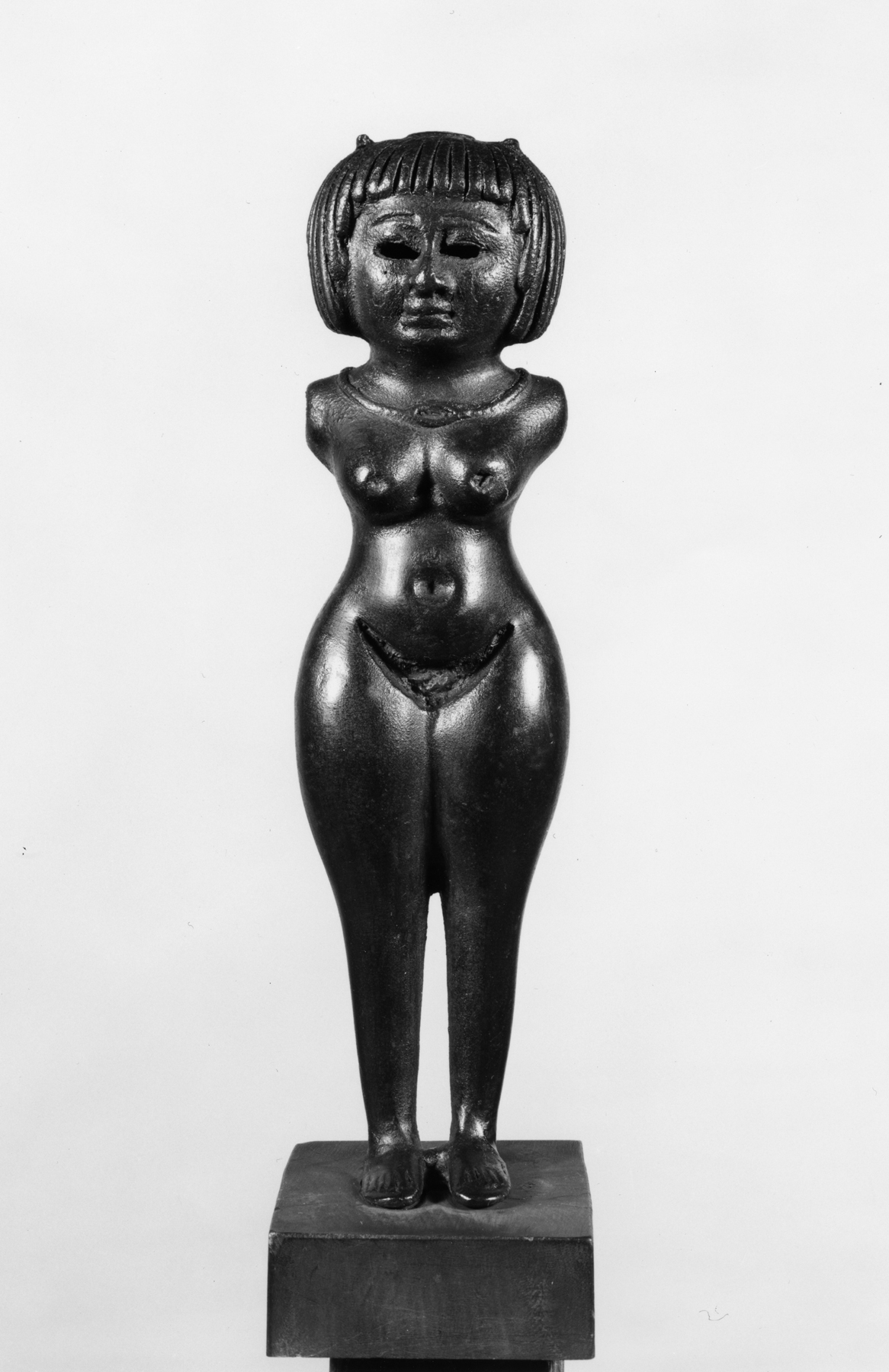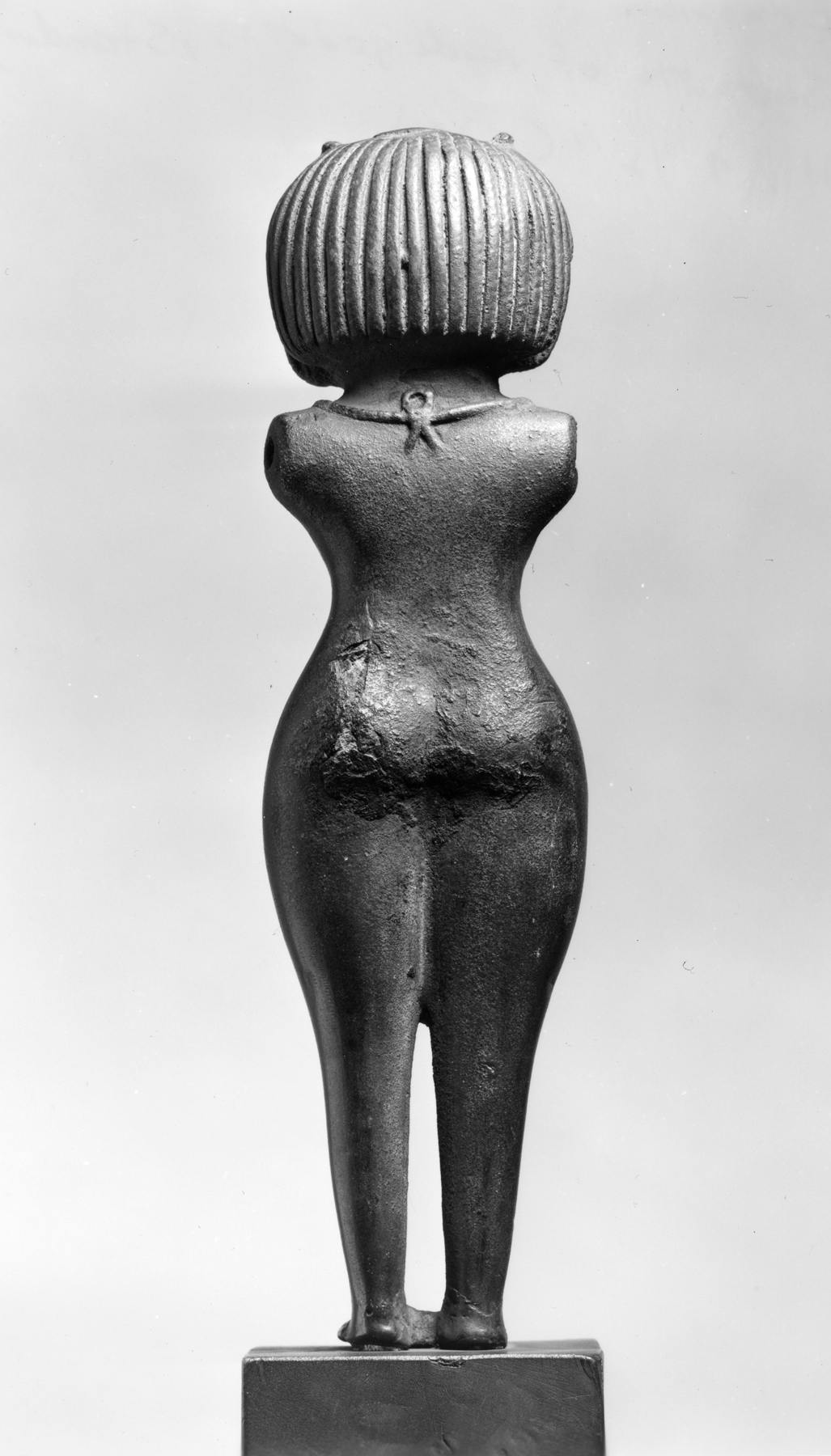Standing Nude Goddess
(Ancient Egypt and Nubia )
This bronze statuette represents a nude goddess. Her pubic region, nipples, navel, eyes, and possibly ears would have been inlaid with another precious material, now lost, that would have highlighted her divinity. She would have worn a crown, which may also have been inlaid. The figure is stylistically similar to large-scale statues from Egypt when it was ruled by the Kushite Empire (747-656 BCE).
The statuette would have had moveable arms suspended on a pin through its shoulders. This technological choice has caused some scholars to propose that this object type could be a type of “doll” or “puppet.” It has been suggested that the statuette could represent Hathor and could have been used in religious performances, where one could have controlled the figure with strings.
Provenance
Provenance (from the French provenir, 'to come from/forth') is the chronology of the ownership, custody, or location of a historical object. Learn more about provenance at the Walters.
Giovanni Dattari, Cairo, [date and mode of acquisition unknown]; Lambros-Dattari Sale, Hotel Drouot, Paris, June 17-19, 1912, lot 426; Henry Walters, Baltimore, 1912, by purchase; Walters Art Museum, 1931, by bequest.
Conservation
| Date | Description | Narrative |
|---|---|---|
| 4/30/1957 | Treatment | cleaned |
| 1/14/1965 | Treatment | cleaned |
| 1/28/1980 | Examination | examined for condition |
Geographies
Egypt (Place of Origin)
Measurements
H: 9 1/2 in. (24.13 cm)
Credit Line
Acquired by Henry Walters, 1912
Location in Museum
Not on view
Accession Number
In libraries, galleries, museums, and archives, an accession number is a unique identifier assigned to each object in the collection.
In libraries, galleries, museums, and archives, an accession number is a unique identifier assigned to each object in the collection.
54.2085




